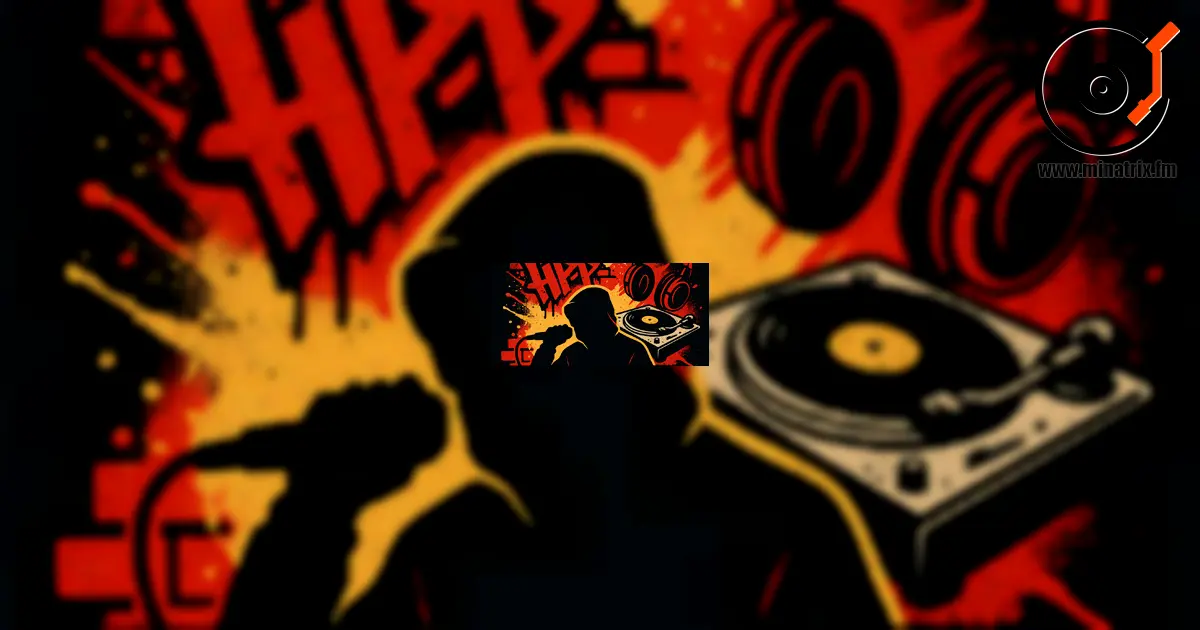
All about hip-hop and rap: history, subgenres, top artists, and the genre’s global impact. From the streets of the Bronx to the world stage.
Hip-hop isn’t just music. It’s a culture that unites rap (MCing), beatmaking, DJing, breakdancing, and graffiti. Born on the streets of the Bronx in the 1970s, it grew into a global phenomenon shaping music, fashion, art, and politics.
History: from block parties to the world stage
-
1970s — origins in New York; early DJs: DJ Kool Herc, Grandmaster Flash
-
1980s — the golden age: Run-DMC, Public Enemy, Rakim, LL Cool J
-
1990s — the rise of rap: 2Pac, The Notorious B.I.G., Wu-Tang Clan, Nas
-
2000s — commercialization and diversity: Eminem, Jay-Z, Kanye West
-
2010s–2020s — mainstream dominance and the trap wave: Drake, Travis Scott, Kendrick Lamar
-
2020–2025 — experimentation, women in rap, hyperpop, Latin influences, and drill
The 4 elements of Hip-Hop culture
-
MCing (Rap) — rhymed delivery over a beat
-
DJing — scratching, mixing, building the groove
-
B-boying — breakdance and battles
-
Graffiti — the visual art of the streets
Signature traits of rap
-
Rhythmic spoken delivery over a beat
-
Themes: street life, protest, success, self-identity
-
Use of punchlines, metaphors, slang
Subgenres and styles
| Subgenre | Features | Examples |
|---|---|---|
| Boom Bap | Classic ’90s beats | Nas, Gang Starr, Mobb Deep |
| Trap | Fast hi-hats, 808 bass, Auto-Tune | Future, Travis Scott, Migos |
| Drill | Gritty street sound; UK/US scenes | Pop Smoke, Central Cee |
| Lo-Fi Hip-Hop | Laid-back beats, atmosphere | Nujabes, Jinsang, Chillhop |
| Conscious Rap | Social and philosophical themes | Kendrick Lamar, J. Cole |
| Alternative | Experimentation, hybrid genres | Tyler, the Creator, JPEGMAFIA |
| Old School | Hip-hop pre-’90s | Run-DMC, Grandmaster Flash |
| Rapcore / Nu Metal | Fusion with rock | Linkin Park, Rage Against the Machine |
Global impact
-
USA — birthplace and largest scene
-
France, Germany, UK — powerful local movements
-
Russia, Ukraine, Kazakhstan — rapid growth since the 2010s
-
South Korea, Japan — K-hip-hop and J-rap
-
Africa — Afrobeats boom; national rap in Swahili, Yoruba, and more
Fun facts
-
The best-selling rapper of all time is Eminem
-
Kendrick Lamar’s To Pimp a Butterfly is widely hailed as one of the greatest albums ever
-
Rap became a backbone of political protest in the US and Europe in the 2000s
-
Rap is the world’s #1 genre by streams (Spotify, Apple Music)
Conclusion
Hip-hop is a cultural force that transcended music to become the voice of streets, generations, and even nations. It began as a way for the unheard to speak — and grew into a global platform for ideas, fashion, visual art, and dance.
Over time, hip-hop evolved: from block parties and boom-bap classics to experimental trap, drill, and TikTok’s emo aesthetics. Yet its heart remains the same — a truthful account of life, struggle, success, and the search for identity.
Today, hip-hop is a universal youth language, breaking down barriers between cultures, countries, and genres. In every beat there’s the energy of the city; in every punchline, the truth; in every dance step, freedom. As long as there are streets, rhythm, and a voice, hip-hop will live — and keep changing the world.

